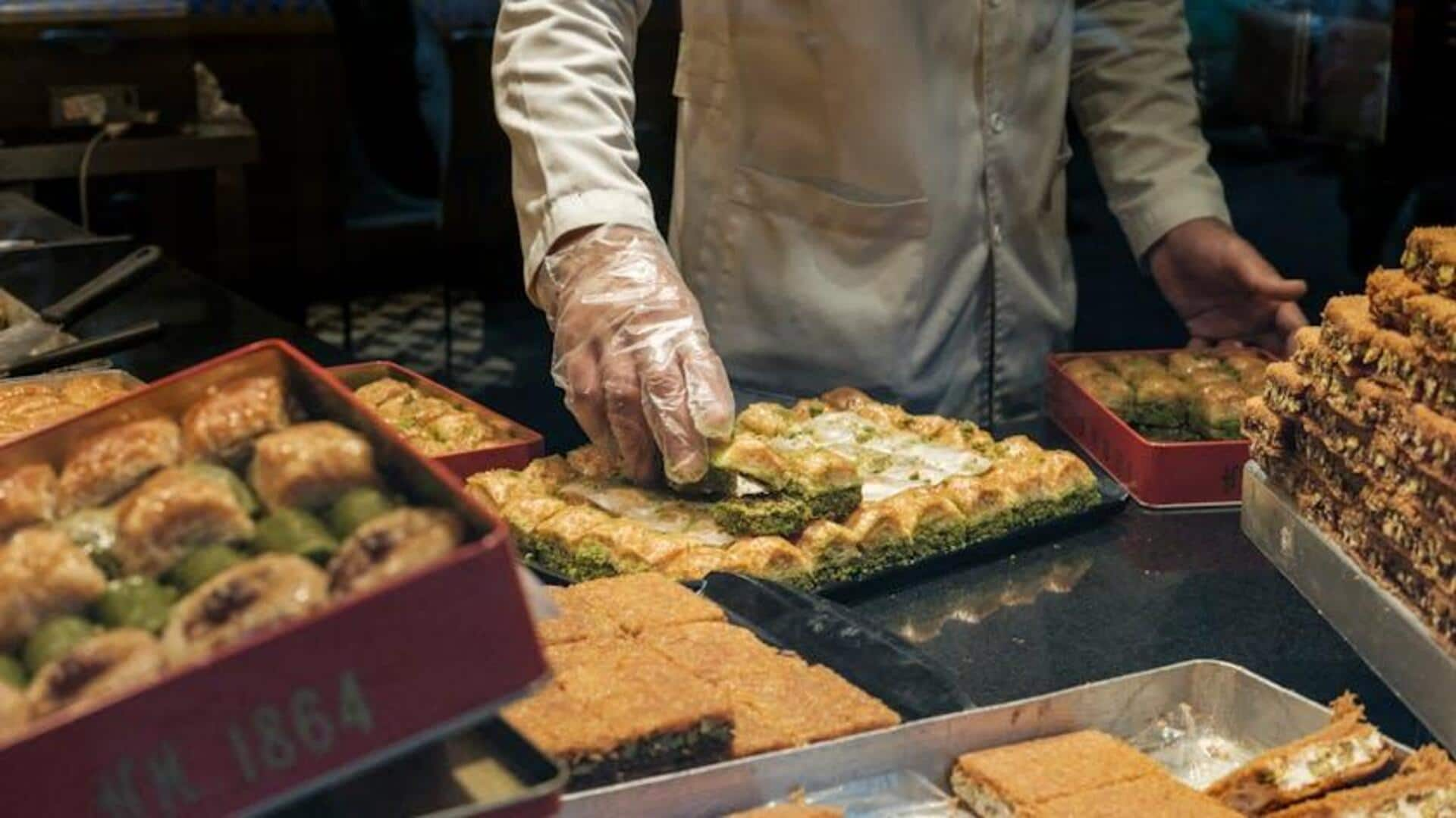
Tracing baklava's journey through time
What's the story
A sweet pastry made of layers of filo dough filled with nuts and sweetened with syrup or honey, baklava has a centuries-old history. Its origins are often debated, but it is widely believed to have roots in Middle Eastern ancient civilizations. Over the years, baklava evolved and spread across cultures, each adding their own unique twist to this delightful dessert. Here's baklava's journey from ancient times to modern-day variations.
Early history
Ancient beginnings
The oldest versions of baklava are believed to have been prepared by the Assyrians around the eighth century BCE. They layered thin sheets of dough with nuts and honey, baking them in wood-fired ovens. This ancient version laid the foundation for what would become a cherished delicacy across many parts. As trade routes widened, so did the recipe and popularity of baklava.
Cultural exchange
Influence of empires
The expansion of empires like Byzantine and Ottoman was largely responsible for spreading baklava across Europe and Asia. Each empire contributed new ingredients and methods, which enhanced its flavor. The Ottomans particularly refined baklava into an art form during their rule from the 14th to early 20th centuries.
Diverse flavors
Regional variations
As baklava made its way through various regions, local ingredients impacted its preparation. In Greece, for instance, a dash of cinnamon is often added for that extra flavor; in Iran, rose water may be used for fragrance; while in Turkey, pistachios are the preferred choice over other nuts. These regional adaptations show just how diverse yet universally loved this dessert has become.
Global appeal
Modern-day popularity
Today, baklava has become a global favorite—both as a traditional dish at cultural celebrations and a gourmet delicacy at high-end restaurants around the world. The presence of this dish on international menus is an indication of not just its deliciousness, but also its rich history as a symbol of cultural exchange over the centuries.